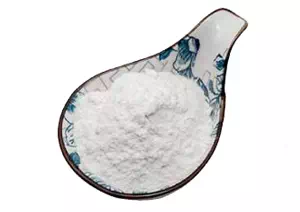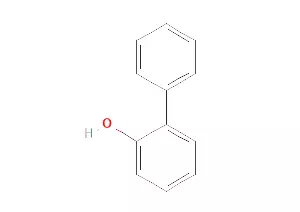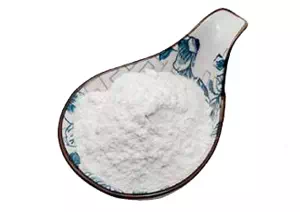2-Phenylphenol information
Chemical Name | 2-Phenylphenol |
Other Name | O-Phenylphenol; OPP |
CAS | 90-43-7 |
EINECS | 201-993-5 |
Type | Food additives; Feed additives; Pharmaceutical raw materials; Organic raw materials |
Molecular Formula | C12H10O |
Molecular Weight | 170.21 |
2-Phenylphenol information
O-phenol (OPP), as a very functional natural chemical product, plays an indispensable role in many fields. In the aspect of health anticorrosion, it can effectively inhibit the growth of harmful microorganisms, ensure the sanitary quality of products, extend its shelf life; In the field of printing and dyeing accessories, it can be used as an important component to help dyes better adhere to the fabric, improve the effect and fastness of dyeing; As a surfactant, it can reduce the surface tension of the liquid, make the liquid easier to penetrate and diffuse, so as to have excellent performance in cleaning, emulsification and other aspects; In the process of synthesizing new plastics, it provides the key basic raw materials for the preparation of plastics, and helps to develop plastic materials with higher properties and special functions; As a stabilizer, it can enhance the stability of the product and prevent deterioration or decomposition during storage and use; In the application of material flame retardants, it can effectively improve the flame retardancy of materials and reduce the fire risk; In the field of polymer materials, it can also make an important contribution to the performance improvement and optimization of materials.
OPP and its sodium salts have the characteristics of broad spectrum sterilization, mildew removal, low toxicity and odorless. This kind of broad-spectrum bactericidal characteristics makes them able to effectively kill and inhibit a variety of bacteria and molds, providing a reliable guarantee for the anti-mildew preservation of many products. They are excellent chemicals that do a great job of preventing mold. Especially in the preservation of vegetables and fruits, the effect is particularly significant. For example, for citrus fruits, OPP and its sodium salt can well prevent the growth of mold and maintain the freshness and taste of the fruit. For lemons, after treatment, the possibility of decay can be greatly reduced and its shelf life can be extended. Not only that, such as pineapple, pear, peach, tomato, cucumber and other common fruits and vegetables, after the use of OPP and its sodium salt treatment, can reduce the occurrence of rot to a certain extent, reduce the loss caused by rot.
The production process of o-phenol mainly includes two important methods: separation and synthesis. Among them, the separation method is to recover phenol from the rectification tail liquor produced by sulfonation. However, with the continuous improvement and perfection of phenol production process, the application range of this separation method of o-phenylphenol is gradually reduced, and the frequency of use is becoming less and less. The synthesis methods for the preparation of phthalophenol are various, including cyclohexanone condensation dehydrogenation, biphenyl sulfonation hydrolysis, biphenyl sulfonic acid oxygen method, phenol coupling method and other different processes. Among these synthesis methods, cyclohexanone is the most widely used to produce o-phenol. The specific process is that under the action of the catalyst, cyclohexanone first undergoes the condensation dehydration reaction to form an intermediate, and then the intermediate undergoes a series of reactions such as catalytic dehydrogenation, and finally produces o-phenol.

2-Phenylphenol Properties
Melting point | 57-59 °C(lit.) |
Boiling point | 282 °C(lit.) |
density | 1.21 |
vapor pressure | 7 mm Hg ( 140 °C) |
refractive index | 1.6188 (estimate) |
Fp | 255 °F |
storage temp. | Store below +30°C. |
solubility | Soluble in ethanol, acetone, benzene,sodium hydroxide, chloroform, acetonitrile, toluene, hexane, ligroin, ethyl ether, pyridine, ethylene glycol, isopropanol, glycol ethers and polyglycols. |
form | Crystalline Flakes |
pka | 10.01(at 25℃) |
color | White |
Odor | nearly wh. or lt. buff crystals, mild char. sweetish odor |
PH | 7 (0.1g/l, H2O, 20℃) |
explosive limit | 1.4-9.5%(V) |
Water Solubility | 0.7 g/L (20 ºC) |
Sensitive | Hygroscopic |
Stability: | Stable. Combustible. Incompatible with strong oxidizing agents, halogens. |

Antifungal and fruit and vegetable preservation
Antifungal action: O-phenol can be used as an effective antifungal agent, which can inhibit the growth and reproduction of a variety of fungi. Its unique chemical structure allows it to interfere with the normal physiological function of fungal cells, thereby preventing fungal erosion and invasion of objects. For example, in some environments that are susceptible to fungal contamination, such as damp warehouses, food storage areas, etc., o-phenol can exert its anti-fungal properties to protect items from fungal damage.
Fruit and vegetable preservatives: In the field of fruit and vegetable preservation, o-phenol also plays an important role. It can help extend the shelf life of fruits and vegetables and reduce decay and spoilage caused by microbial action. Under normal circumstances, it is widely used in citrus peel mildew prevention, and its maximum usage is 3.0 g/kg, which means that when dealing with a certain amount of citrus, the use of o-phenol can not exceed this limit value to ensure that the preservation effect is achieved at the same time, it will not cause harm to human health. At the same time, the repeated dosage does not exceed 12mg/kg, which further ensures the safety and rationality of use.
Synthetic fiber related aspects
Carrier dyeing agent: In the textile industry, o-phenol can be used as a carrier dyeing agent for the dyeing process of hydrophobic synthetic fibers such as polyvinyl chloride and polyester. It can help the dye better penetrate into the fiber, making the dyeing more uniform and firm. Through the interaction with dye molecules, o-phenol can improve the adsorption capacity and diffusion performance of dye on the fiber, so as to achieve high quality dyeing effect.
Surfactant: O-phenol also acts as a surfactant. It can reduce the surface tension of the liquid, making it easier for the liquid to unfold and penetrate the surface of the object. In the processing of synthetic fibers, this surface active property helps to improve the surface properties of the fibers, improve the softness and antistatic property of the fibers. For example, in the production of polyester fiber, adding an appropriate amount of o-phenol can make the surface of the fiber smoother, reduce the friction between the fibers, and improve the processing performance and comfort of the fiber.
Preservative: As a preservative, o-phenol can effectively inhibit the growth of bacteria, mold and other microorganisms, and prevent the deterioration of synthetic fibers during storage and use. It can form a protective film on the surface of the fiber to prevent microorganisms from coming into contact with the fiber, thus extending the service life of the fiber.
Color intermediates: In the synthesis process of dyes, o-phenol can also be used as a color intermediate. By reacting with other chemicals, it can be derived into a variety of different colors of dyes, providing a rich variety of color options for the dyeing of synthetic fibers.
Trisugar reagent fluorescence determination and dye intermediates
Fluorescence determination of trisugar reagents: In biochemical analysis, o-phenol can be used for fluorescence determination of trisugar reagents. Under certain chemical reaction conditions, the trisugar reagent will react with some substances and produce fluorescence signals, and o-phenol plays a key role in this process. It can participate in the construction of the reaction system, enhance the intensity and stability of the fluorescence signal, and thus improve the sensitivity and accuracy of the determination. This fluorescence determination method has important application value in biomedical research, food detection and other fields.
Dye intermediates: In addition to its use in fluorescence determination of trisugar reagents, o-phenol is also an important dye intermediate. It can be converted into a variety of different types of dyes through a series of chemical reactions to meet the needs of different fields for color. For example, in the textile printing and dyeing industry, the dyes synthesized with o-phenol as raw materials have the advantages of bright color and good fastness, and are widely used in dyeing and printing of various textiles.
Bioenzyme inhibition and sucrose analysis and detection
Deoxyribonuclease (DNase) inhibitors: O-phenol can act as an inhibitor of deoxyribonuclease (DNase). In vivo, DNase can catalyze the hydrolysis of deoxyribonucleic acid (DNA), and the presence of o-phenol can inhibit the activity of this enzyme, thus protecting the integrity of DNA. This property is of great significance in molecular biology research, such as in gene cloning, DNA sequencing and other experiments, to prevent DNA from being accidentally degraded.
Sucrose analysis and detection reagents: O-phenol also plays an important role in the analysis and detection of sucrose. It can undergo a specific chemical reaction with sucrose, and by observing the color changes or other signal changes produced by the reaction, the content and purity of sucrose can be determined. This detection method has the advantages of simple operation and high sensitivity, and is widely used in food industry, biopharmaceutical and other fields.
antiseptic
2-phenyl phenol has strong bactericidal function, which makes it widely used in many fields. In the wood, leather, paper and other industries, it can effectively prevent these materials from being eroded and corrupted by microorganisms. For example, in the anticorrosive treatment of wood, 2-phenylphenol is applied or sprayed on the surface of wood, which can form a protective film to prevent the growth of microorganisms such as bacteria and fungi and extend the service life of wood. In the production process of leather products, adding an appropriate amount of 2-phenylphenol can prevent mold and deterioration of leather, and maintain the quality and performance of leather. In the production and storage process of paper, the use of 2-phenylphenol can prevent the paper from being contaminated by bacteria and avoid problems such as yellow and brittle paper. In addition, in the storage process of fruits, vegetables and meat, 2-phenylphenol can also play its role in sterilization and preservation, extend the freshness period of these foods, and reduce food waste.




